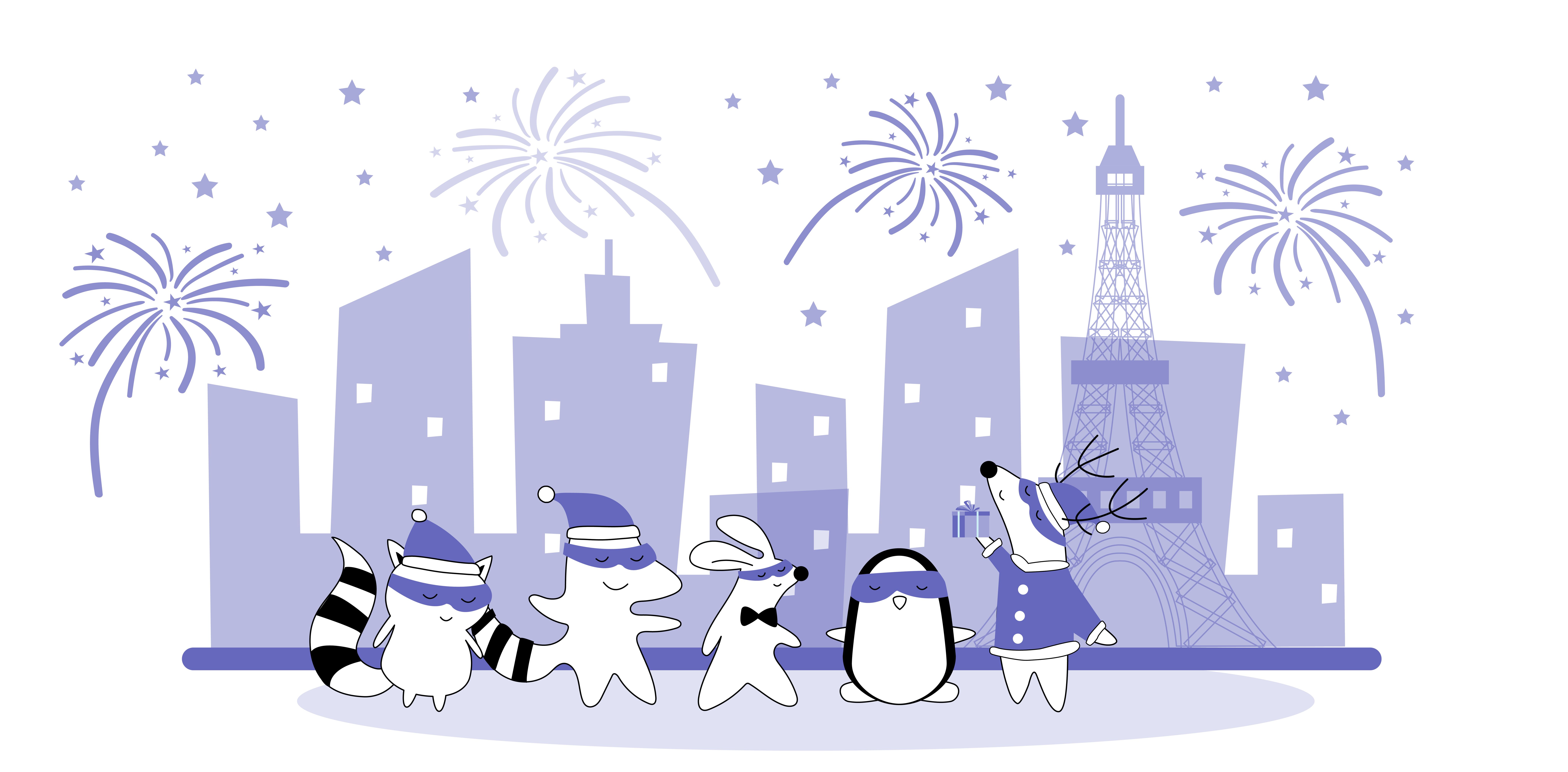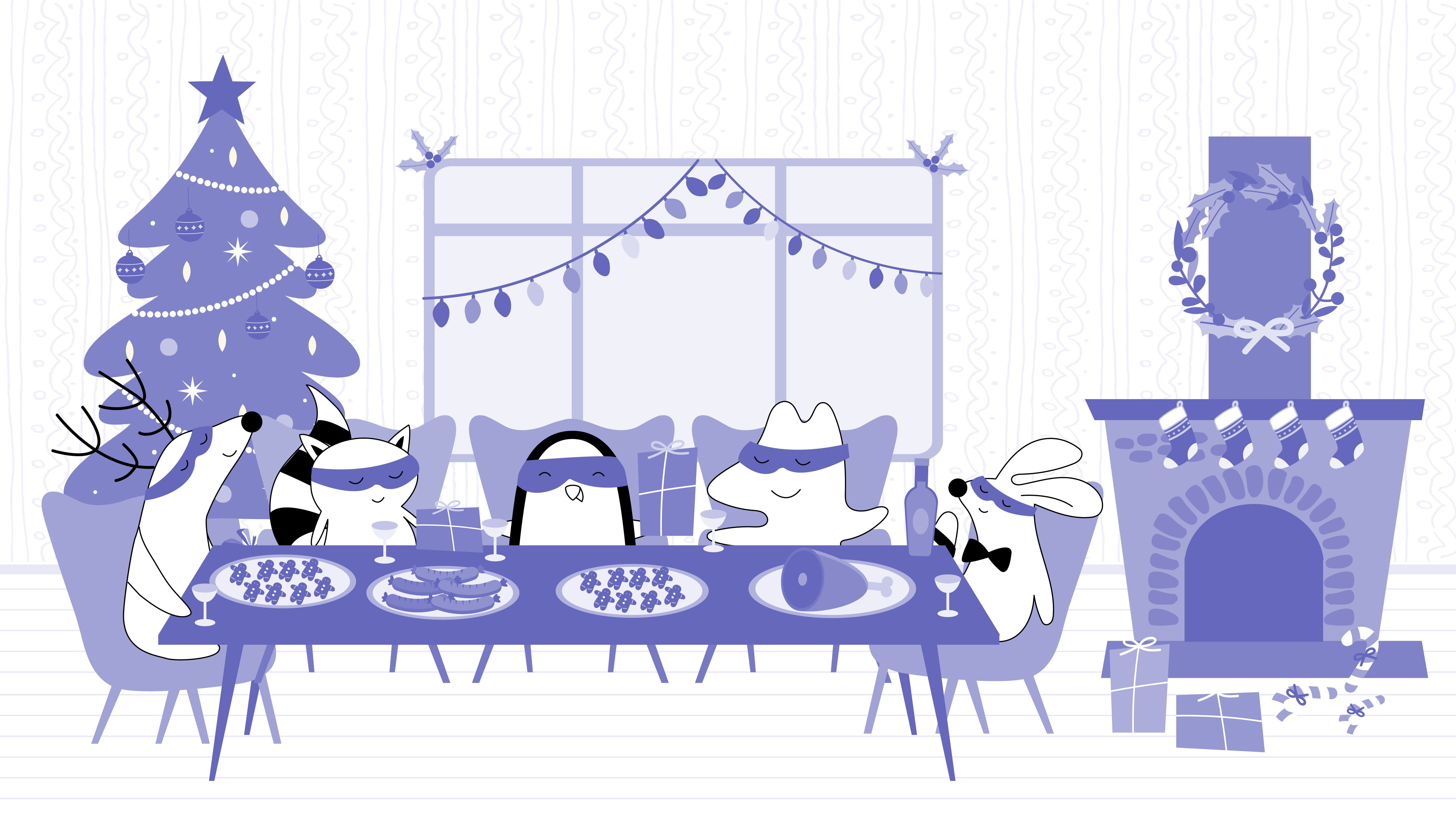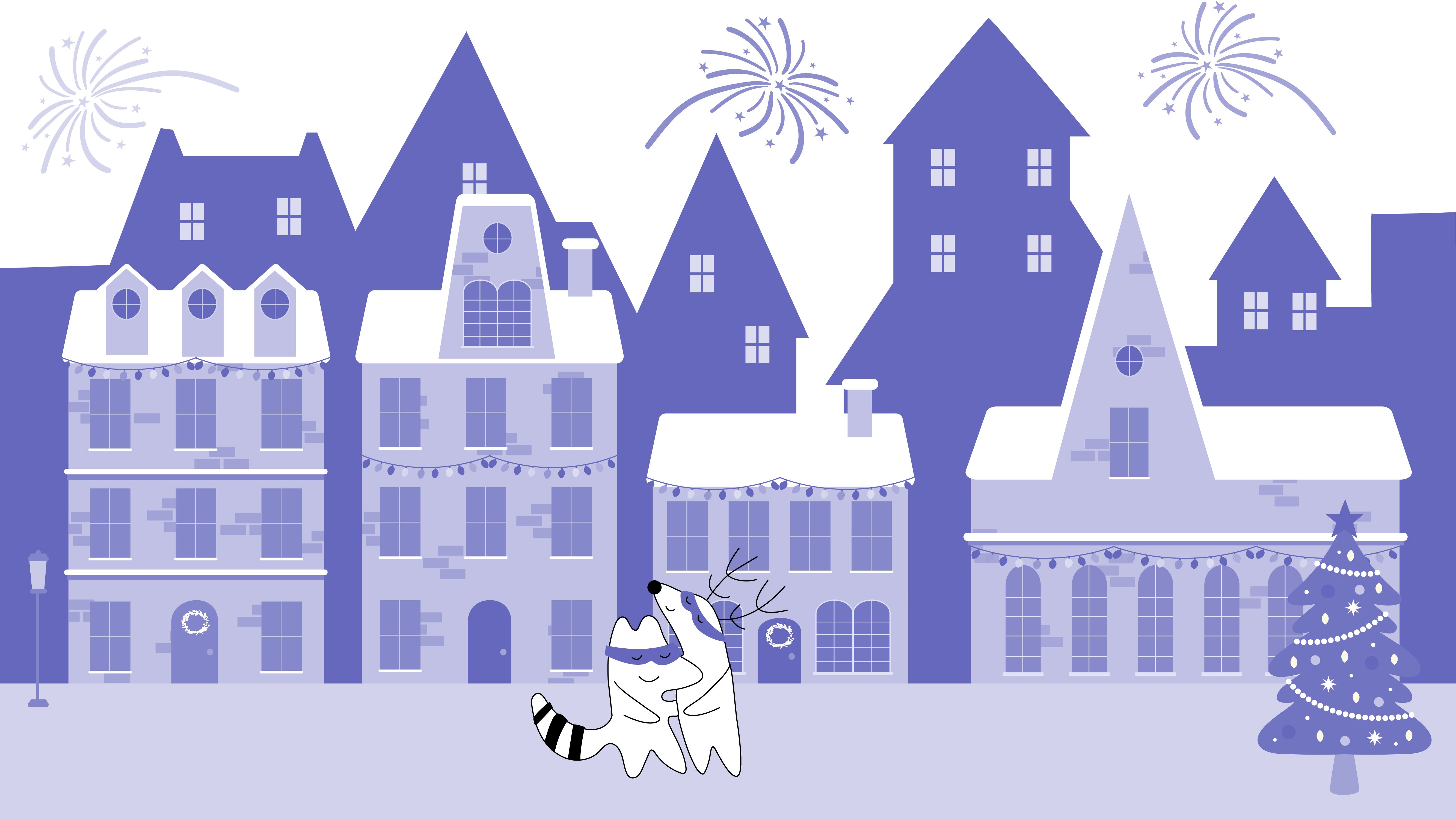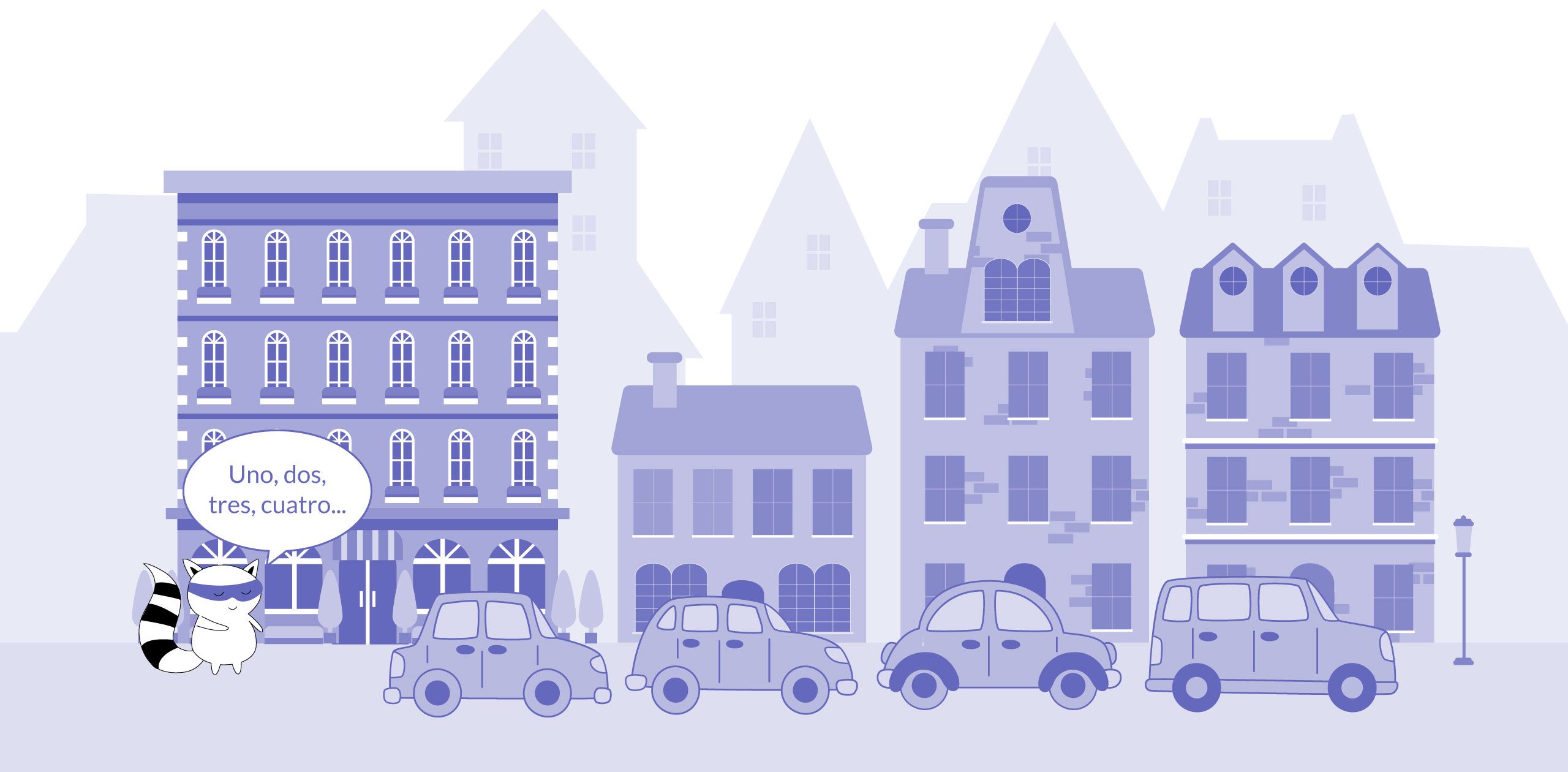
As the clock ticks towards a brand new year, an electric anticipation fills the air, uniting people worldwide in joyous celebration. Yet, within this global festivity lies a myriad of unique customs and traditions, each as diverse and vibrant as the cultures they originate from.
For Spanish learners, this offers a fantastic opportunity to not only enrich your linguistic skills but also immerse yourself in the colorful tapestry of Hispanic culture.
Let's learn different ways to wish a "Happy New Year" to your Spanish friends and family and discover five fascinating traditions that mark this special occasion across many Latin American countries. Who knows? If you dive into the heart of these celebrations, you might just find some inspiration to infuse your own New Year's festivities with a sprinkle of Spanish charm. ¡Vamos!
Learn Spanish with Langster
Saying “Happy New Year” in Spanish
In Spanish, the most common way to wish someone a happy new year is muy feliz Año Nuevo. This phrase is used across all Spanish-speaking countries. However, there are also other ways to convey the same sentiment on New Year's Eve (as it happens with Feliz Navidad or Merry Christmas).
Let's have a look at some of them:
Un Próspero Año Nuevo
This phrase, which translates to "A Prosperous New Year," is often used to express hope that the upcoming year will be filled with success, wealth, and good fortune. It's a beautiful way to wish someone prosperity in all their endeavors.
Spanish
English
Te deseo un próspero Año Nuevo lleno de éxitos.
I wish you a prosperous New Year full of successes.
Feliz Año
This is a more casual way to say "Happy New Year" in Spanish. The full phrase is Feliz Año Nuevo, but this shortened version, which translates to "Happy Year," is commonly used as well.
Spanish
English
¡Feliz Año! Espero que sea uno de los mejores.
Happy Year! I hope it's one of the best.
Que tengas un buen año y felicidad
In the Spanish-speaking world, his heartfelt phrase translates to "May you have a good year and happiness." It's a sincere wish for someone to experience joy and overall well-being in the new year.
Spanish
English
Que tengas un buen año y felicidad en todo lo que hagas.
May you have a good year and happiness in everything you do.
Mis mejores deseos para el nuevo año

This phrase, which means "My best wishes for the new year," is a thoughtful way to express your hopes for someone's happiness, health, and success in the upcoming year.
Spanish
English
Mis mejores deseos para el nuevo año. Que sea lleno de paz y amor.
My best wishes for the new year. May it be filled with peace and love.
Spanish New Year Traditions
Now that we've covered how to wish someone a happy New Year in Spanish, let's look at five New Year's traditions celebrated across Latin American countries, so you can celebrate with your Spanish-speaking friends like a native.
1. Las Doce Uvas de la Suerte (The Twelve Grapes of Luck)

The tradition of eating grapes originated in Spain and has since spread to Latin America. As the final seconds of the old year start to wane and the clock teeters on the brink of midnight, everyone gathers around with a cluster of twelve grapes.
Each grape, plump with promise, signifies good luck for a month of the forthcoming year. The stroke of midnight triggers a race against time, a playful challenge that adds a dash of excitement to the festivities.
With each toll of the bell, participants swiftly eat a grape in chaos, as friends and family cheer each other on, their laughter and chatter forming a joyous soundtrack to the countdown when the clock strikes midnight.
2. Año Viejo (Old Year)
In several Latin American countries, the dawn of the New Year is marked in a visually striking and symbolic way through the creation and burning of effigies known as Año Viejo or “Old Year.”
This tradition provides a tangible representation of leaving the past behind and embracing the future, imbuing the New Year's celebrations with a deeper sense of meaning, good wishes, and renewal.
The process of crafting these life-sized dolls is often a communal activity, drawing together families, friends, and sometimes entire neighborhoods. Old clothes are stuffed with newspapers to give the doll its form, while firecrackers are tucked inside, adding an explosive element to the ritual.
The faces of the dolls, often crafted from paper mache, can depict anyone from political figures to celebrities, adding a layer of humor or commentary to the tradition.
3. First Footing
First footing is a fascinating tradition observed in Spain, deeply rooted in historical context and cultural beliefs. The term "first-footer" refers to the first individual to cross the threshold of a home after the stroke of midnight on New Year's Day. The arrival of this person is thought to set the tone for the year ahead, bringing either good fortune or misfortune.
The ideal first-footer is traditionally a tall, dark-haired man. This preference harks back to the times when fair-haired or red-haired individuals were associated with Viking invaders. In those days, a blonde or red-haired stranger stepping into one's home was often a harbinger of trouble or even violence.
Thus, seeing a dark-haired visitor at the door, particularly at the start of the New Year, was considered a sign of relief and good luck.
4. Throwing Water out the Window

In certain Spanish-speaking nations, such as Puerto Rico and Cuba, there is a distinctive New Year's tradition that involves the ceremonial act of throwing a bucket of water out of a window. This practice is steeped in cultural beliefs and folklore, serving as a physical manifestation of driving away evil spirits and negative energy from the past year.
The ritual begins with filling a bucket or pail with water. This water is believed to absorb the previous year's misfortunes, disappointments, and any lingering negativity inhabiting the home. As the clock strikes midnight, signaling the dawn of the New Year, this water is then tossed out of a window or, sometimes, a door.
The act is often accompanied by cheers and laughter, creating an atmosphere of shared anticipation and relief.
5. Walking Around the Block with Suitcases
If you're in Colombia or Mexico around New Year's, don't be surprised if you see people walking around their block carrying empty suitcases. This tradition is done in the hope of bringing a year filled with travel and adventure.
Each of these traditions encapsulates the spirit of a Spanish New Year – full of joy, hope, and a dash of superstition. So, whether you're saying Feliz Año Nuevo or eating twelve grapes at midnight, remember that each custom carries a wish for happiness, prosperity, and good fortune in the year to come.
The Bottom Line

In conclusion, the Spanish language offers a variety of ways to wish someone a “Happy New Year,” each with its unique charm and warmth. Similarly, the traditions that mark this day are as diverse and vibrant as the cultures they originate from.
As we embrace the new year to come, may we also celebrate this rich tapestry of customs that connect us across borders and languages. And, what better way to practice the language than using Langster’s app or desktop version? It’s completely free, and we add new stories everyday. Download it today, and soon you’ll be using feliz año like a native speaker.
Learn Spanish with Langster









